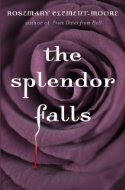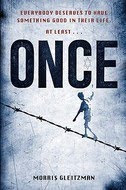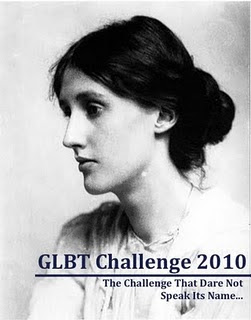.jpg) Townsend, John Rowe. Noah's Castle. 1975. Seattle, Wash.: October Mist Publishing, 2010. Print.
Townsend, John Rowe. Noah's Castle. 1975. Seattle, Wash.: October Mist Publishing, 2010. Print.[Book cover credit: Provided by publisher]
Awards:
A Horn Book Fanfare Best Book (1977)
Booktalk:
When a financial crisis makes it impossible for England to import food, the country begins to fall apart. When Barry's father starts hoarding food in the basement rather than helping those in need, those on fixed incomes such as the elderly and the infirm, the Mortimers begin to fall apart as well.
Review:
It took me a long time to get into this book. Barry's father is just so horrible, even before he starts hoarding, that I didn't think I could handle a book full of him. For example:
"You always used to be at work all day until we moved here," Mother pointed out.Except that he is aware. He spends the entire book making belittling comments about Barry's mother and older sister Nessie, mostly about their inferior, womanly minds. And, for the most part, they just took it. Nessie gets all riled up about it, but only in front of Barry. No one stands up to Father. It wasn't until Barry started to doubt his father that I started to get into Noah's Castle. Then Nessie started actively defying her father and it really started to get good.
"That was before the present crisis," said Father. "Now I have the shopping to do."
"It was you who insisted on doing it," Mother said. ... "I sometimes wonder what I'm for. Just cooking and cleaning, I suppose. I might as well be a servant."
"A servant would need wages," Father said -- unaware, I was sure, of any cruelty in the remark.
p.43
Of course at the same time, problems much bigger than a horrifically controlling and sexist head of household are looming all around the Mortimers. As food goes beyond "scarce" right to "rare," people around them start to starve. Barry, Nessie and their mother have to deal with the guilt of knowing that they have plenty when so many other people are suffering and dying of want. Father, on the other hand, feels no guilt. Those people are ill-prepared and none of the Mortimers are allowed to share with them, not matter how hungry, elderly, young, or sick they are. This conflict is the core of the novel. As much as you want to help the needy around you, how do you give away all of your food, not knowing when you may get more, knowing that it means your sickly little sister may go hungry? It's an impossible question with no rights answer, and none is given in the book. But the rights and wrongs of everyone's actions are explored.
Of course, the wrongness of the sexism isn't explored to its fullest, but maybe that would be a bit too much to ask of a book originally published in 1975. Luckily, Nessie struggles against her father's beliefs and bullying and seems like she'll escape the Mortimer house unscathed.
Book source: Review copy provided by the publisher.










